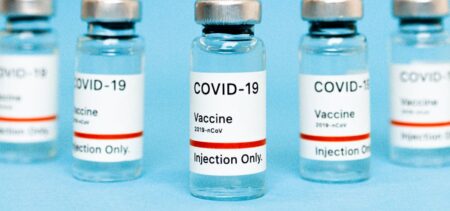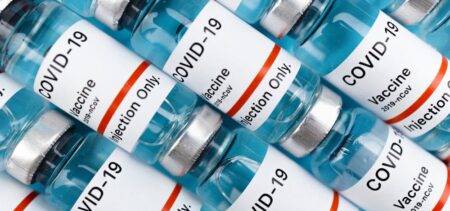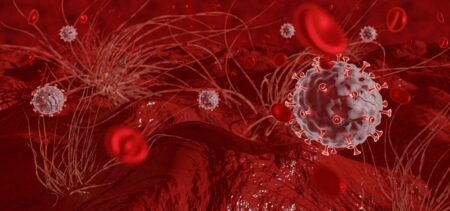For the biopharma industry, the start of the year holds one of the biggest events in the global industry calendar, JPM Week. It’s the ultimate meeting of minds, bringing together scientists, pharmaceutical industry professionals, bankers, investors, startup founders, journalists, and media. It sets the stage for the trends for the year and provides insight into the industry landscape. Partnering with B2B media house Fierce Biotech, the Fierce JPM Week took place in San Francisco from January 9th to the 10th, with the virtual conference following from January 16th to the 18th. Here’s a roundup of all the news coming out of Fierce JPM Week, and what this means for the industry for the rest of the year.
Will there be capital available this year?
The pandemic gifted the biopharma industry with huge investments, thanks to ramped-up vaccine production and global distribution deals with governments and non-governmental organizations. The post-pandemic environment has been cold for biopharma over the last two years, reflecting the broader economic downturn. Plagued with mass layoffs across the industry, the big question for 2024 is, “will there be capital available to swing a turnaround?”
JPM Week revealed that there’s room for cautious optimism, thanks to a number of investor exits, freeing up funds for mergers, acquisitions, and IPOs. Availability of capital translates into funds for continued research and development, which really means more commercially available treatment options for patients facing rare and under-researched diseases. Driving this wave of optimism is Federal Reserve Chair, Jerome Powell, who anticipates as many as three interest rate cuts in 2024.
The markets have clearly responded well to this, with the XBI (Biotech select industry index) moving up 5% since the announcement in December. Other signs of life include the flurry of dealmaking activity at the end of 2023, namely the acquisition of Chinese startup Gracell Biotechnologies by AstraZeneca for $1.2 billion. All things remaining equal, we’re set to see a slow revival of the biopharma sector, with the first drop of funds starting to trickle in.
Public Policy vs Private Pharmaceuticals
Despite the cautious optimism, the biotech and biopharma industry is far from out of the woods. Policy and politics have created substantial blockades, from sustained high interest rates, global political tension, and the proposal of the Inflation Reduction Act (IRA). Of particular interest in the short and medium term is the IRA, which industry leaders believe will further hinder investment in drug discovery.
This comes at a crucial time for the industry, when technology has finally advanced to the point where research and development are making a tangible difference in diseases previously considered untreatable. Should it come to pass, the IRA would institute price ceilings on a number of drugs, with the first round of negotiations set to be tabled by February 1; companies will be given a month to propose counteroffers. The long-term vision of the Act is to set a firm maximum price on drugs, coming into effect in 2026.
Sage Technologies CEO Barry Greene referenced their work in drugs to enhance cognition for those diagnosed with Parkinson’s, Alzheimer’s, and Huntington’s, stating, “It would be a shame to bring a drug to market and say, ‘We’re not going to focus on the elderly who can benefit from that because we can’t suffer from the government picking a price for us in some number of years. Those are the dynamics playing out in front of us.” Lawsuits involving pharma companies and trade groups have already been filed, challenging the constitutional grounds of the Act, with observers expecting the matter to eventually end up in the Supreme Court.
AI signifies stronger ties between tech and pharmaceuticals
Artificial Intelligence is slowly gaining ground in the pharmaceutical industry. With a number of use cases for the technology, we’re seeing the benefits of machine learning in managing large data sets, extracting data-driven insights, discovering targets, and designing new compounds. AI has also been featured in clinical trial design, patient triage, and even the preparation of regulatory submission documents. In essence, we’re seeing AI’s ability to drive drug discovery, strengthening relations between Big Pharma and Big Tech. To illustrate this point, one of the most popular talks at JPM was hosted by NVIDIA, the global AI computing giant.
Experts are quick to caution, however, that while the mutually beneficial relationship is clear, we’re still quite far from significant changes to the drug discovery and drug-making processes. Holding room for caution, AI enthusiasts hope to see the technology enable the industry to produce drugs cheaper, faster, and easier.
GLP-1S and CAR-T, the talk of the town
Weight loss and gene therapy are among the most significant breakthroughs in Big Pharma going into 2024, and we can expect to see a number of iterations of GLP-1S and CAR-T therapies this year. GLP-1S, the active ingredient better known by its celebrity-endorsed name, Ozempic, or Wegovy, made waves. The demand for Semaglutide is not likely to slow down any time soon, thanks to its weight loss properties. Medically, the pills are prescribed for patients with Type 2 diabetes, but the Hollywood-created demand has meant that many patients who need it have had struggles accessing the drug.
Gene and cell therapies are another wave we will likely see Big Pharma scrambling to catch a ride on. Chimeric antigen receptor T-cell (CAR-T) therapy has been instrumental in providing treatment options and cures for untreatable and rare diseases. Thus far, CAR-T treatments have shown incredible results for patients with Relapsed/Refractory Multiple Myeloma and autoimmune diseases like sickle cell. With a lower patient burden, in vivo treatments require less hospital time and enable T-cells to more effectively fight cancer and diseased cells.
China emerges as the go-to investor market
For the bankers in the room, China was the name on everyone’s lips. With a burgeoning population size, a large contingent of biopharma startups, and improvements in the country’s regulatory frameworks, the pharmaceutical trade between the US and China has increased exponentially over the last decade. China is increasingly recognized as the go-to market for investor relations. Experts anticipate that more acquisitions and partnerships mirroring AstraZeneca’s purchase of Gracell could be seen in 2024. To solidify these assertions, Bayer and biotech investment company, RTW, announced an equity investment into a Chinese company focused on the clinical-stage treatment of cardiovascular and eye diseases, hailing pharmaceuticals as the next frontier of US-China trade relations.
Dealmakers: Roundup of the top 3 deals coming out of JPM Week
- Ambrx exit at $2 billion
Johnson & Johnson raised $2 billion for antibody experts, Ambrx. The antibody-drug conjugate (ADC) market sector is rapidly gaining traction, referred to as “smart chemo”. ADCs provide targeted, small doses of cytotoxins directly to cancer cells with minimal damage to other cells. For $2 billion, J&J gets ownership of Ambrx and its Phase I/II ADC trials for advanced prostate cancer. The pharmaceutical giant is no stranger to ADCs, having already acquired a research and licensing deal with Mersana Therapeutics for $40 million in February 2022, hoping to attract profits to the tune of $1 billion. J&J also bought LegoChem Bioscience’s ADC licensing rights for $100 million, estimating income from payments at $1.7 billion.
- GSK focuses on asthma
GlaxoSmithKline spent $1 billion on acquiring Aiolos Bio, focusing on asthma treatment. Aiolos Bio stands to earn an additional $400 million on the deal, pending fulfillment of regulatory requirements. GSK is particularly interested in AIO-001, a monoclonal antibody that targets the cause of inflammation in asthma patients. Once complete, the treatment will drastically reduce treatment to just twice a year.
- Merck dives deep into cancer research
Merck is set to acquire cancer biotech Harpoon Therapeutics for $680 million. No stranger to cancer research, Merck is set to boost its immunotherapy and oncology pipeline. Harpoon Therapeutics develops both T-cell and antibody therapies to eliminate cancer cells. HPN328 is a clinical-stage therapy currently in Phase I/II trials aimed at patients diagnosed with advanced cancers associated with Delta-like ligand 3 (DLL3).
Conclusion
The ice is starting to thaw. That’s the mood from JPM Week, suggesting that the industry could start to see signs of life emerging. There are a number of factors still standing in the way of a total comeback: steep interest rates, unstable geopolitics, and the proposed Inflation Reduction Act. But it’s not all doom and gloom; the Federal Reserve announced three anticipated interest rate cuts this year, and legal teams are ready to negotiate with Congress on the IRA. In the meantime, China has emerged as a partner, prioritizing innovation, research, and discovery, while AI is increasingly seen as a tool to enable efficiency in the industry. Amidst mass layoffs and an intense cooling period following the pandemic, JPM Week heralded the (slow) return of Big Pharma.





































